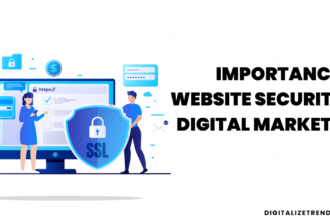
Live streaming platforms are becoming a big part of the online world in 2024. It doesn’t matter whether you are a gamer showing off your gaming skills or a business hosting virtual events – the process of how we connect with people is changing for good.
Recent data indicates that the global pay-per-view market for live video streaming is projected to hit USD 2.4 billion by 2027. But with this growth comes a big challenge: keeping everything safe online.
You need to protect three things: your content, your viewers, and yourself. Think of it like locking your doors at night – it’s just smart to have some security in place.
So, how do you make sure your live streams are secure? Let’s dive into the why and how of keeping your online broadcasts safe and sound.
What is a Live Video Streaming Platform?
A live video streaming platform is that online TV channel that lets you broadcast your videos over the internet with the help of certain tools. You can engage with your audience through features like chat, likes, and comments.
Teachers use live streaming platform for their online classes. Businesses use them for virtual meetings, product launches, and customer support. Even news outlets go for a live video streaming platform to report breaking stories as they happen!
Let’s take a look at some more actual data:
- 20% of adults between 18 and 34 watch content on a live-streaming platform multiple times a day
- It is estimated that live video streaming will grow to more than USD 3 billion in 2027
These numbers show that live video streaming isn’t just a trend. Now, it’s becoming a major way people watch and create content online.
What Are Two Methods of Secure Streaming?
Let’s talk about securing your live video streaming platform in more detail. We already discussed why it is important. But how to achieve that security? There are two main ways to make your live video streaming more secure: public streaming and private streaming.
Public live video streaming is when anyone can watch your stream. This means that streams are reaching a wide audience, but it also means you have less control over who’s watching. They are more vulnerable to unwanted viewers and potential frauds.
Private live video streaming, on the other hand, is like an invite-only party. You control who can watch your stream by using passwords, special links, or limiting access to specific users. If you are planning to create a more exclusive experience or want to share some sensitive content – then this type of streaming is a good idea.
How to Secure Your Live Streams: 7 Best Methods
Securing your live-streaming video solutions is more important than ever in 2024. As live video streaming platforms become more popular, they also become a bigger target for hackers. And for proper security, you need the right security features.
Let’s look at the top 7 best ways to secure your live streams in 2024:
1. AES Encryption
This is like a super-strong lock for your live video streaming. AES (advanced encryption standard) encryption scrambles your video data so that only people with the right “key” can watch it.
This stops hackers from stealing your content as it travels over the internet.
2. HTTPS Delivery
HTTPS is the secure version of the protocol used to send data over the web. Using HTTPS for your live streaming platforms means you’re transmitting your content through a secure tunnel.
This makes sure it reaches your viewers without being changed along the way.
3. SSL/TLS Encrypted Paywall
This feature is extremely important if you charge for your live video streaming solutions. It keeps the viewer’s financial information safe and protects the payment process.
It’s like having a secure cash register for your online content.
4. Password-Protected Video
This is a simple way to control who watches your live video streaming. By setting a password, you can make sure only people you’ve invited can tune in.
It’s great for private events or sensitive content.
5. Geographic (IP) Restrictions
This feature lets you control where your live-streaming solution can be watched. You can block or allow viewers based on their location.
It’s useful if you’re streaming content that should only be seen in certain countries or regions.
6. Secure Video Data Centers and CDN
This is about where your live streaming solutions are stored and how they’re sent out to viewers.
Using secure data centers and a Content Delivery Network (CDN) helps keep your live video streaming running smoothly and safely.
7. Referrer Restrictions
This stops other websites from entering your live video streaming without permission. It checks where the viewer is coming from and only allows access if they’re on an approved site.
This helps prevent your content from being shown in places you don’t want it to be.
Wrapping Up
So, we discussed that keeping your live streams safe is crucial in 2024. We also explored seven methods to protect your content and your viewers from online threats. Strong security isn’t just about preventing issues; it’s also about building trust and expanding your audience.
Look at your current live-streaming platform. Does everything seem alright and in place? Are you using all these security features? If you haven’t already, start incorporating them one by one.
You don’t have to do everything at once, but every step you take makes your streams safer.
Don’t wait for something to go wrong. Secure your live streams today and stream with confidence!








